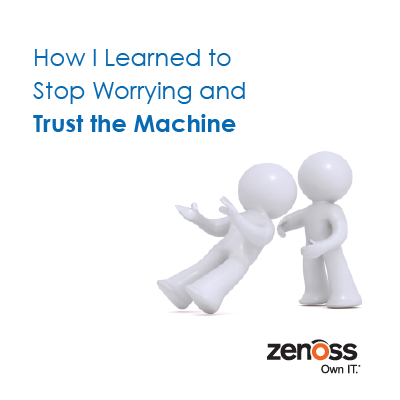
My wife still recounts, with horror, the story of when she first saw where I lived and discovered my office. Her breath caught in her throat when her eyes fell on my “filing system,” which basically consisted of individually stacked piles of paper — cellphone bills here, bank statements there, and so forth. (I’m extremely lucky that she didn’t turn and walk out the door right then and there.)
I quickly brought the paperwork situation under control with a shredder and a filing cabinet, but my email was never so lucky. I built a carefully considered set of folders into which I thought I would dutifully shunt emails as soon as they came in, but I never was able to keep up with the system for long. My needs would change, my collection of folders would grow, or the rate of incoming mail would be so great that I’d lose the will to stay on top of filing it. My inbox would get deeper and deeper, and if I had to find an email from months earlier and couldn’t remember who sent it, I was effectively screwed.
When we switched to a SaaS email provider and I could find any email within a few seconds with a simple search, it was as if I had just been granted a superpower. My email game vastly improved. I no longer worried about cataloging emails as soon as I sent them, or as soon as they came in. I didn’t care about assigning the right tags or labels or folders — I simply sent and received them. If something came in that I didn’t care about now, I punted it into the archive with the confidence of knowing that I could easily pull it up again at any time, from any device, with a quick fuzzy search.
Modern IT monitoring solutions feel a little bit like that. The Digital Enterprise Journal found that IT Ops teams are dealing with an 88 percent increase in the amount of data flowing into their monitoring platforms. Legacy monitoring tools simply can’t handle it. But a modern one, like Zenoss Cloud, is designed from the ground up to allow machine intelligence to accept and store all the incoming data on your behalf and only serve up the most relevant information to you so your valuable attention isn’t wasted.
In a recent report, 451 Research found that Zenoss exemplifies the trend in IT monitoring toward augmenting traditional infrastructure data collection with streaming data ingest, service modeling and AIOps capabilities. This offers a better outcome than bolting an AIOps solution onto existing monitoring tools because Zenoss can place all the incoming streaming data (from other tools and applications) in context with infrastructure events — allowing machine learning algorithms to deliver definitive answers instead of probable hypotheses.
For more of 451’s perspective on how Zenoss is leading the next wave of IT consumption, please check out the report. We also have a webinar coming up with Nancy Gohring, an analyst at 451 research, on this very topic - so please consider registering.







